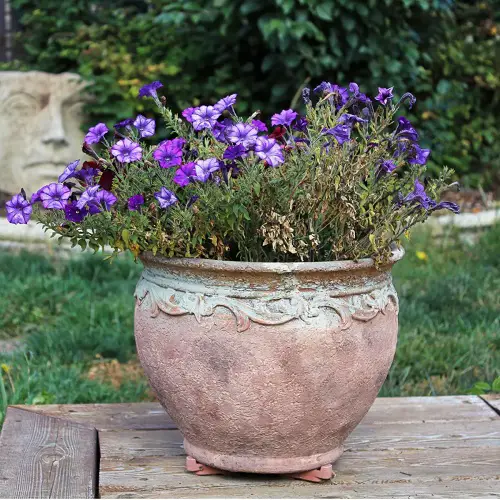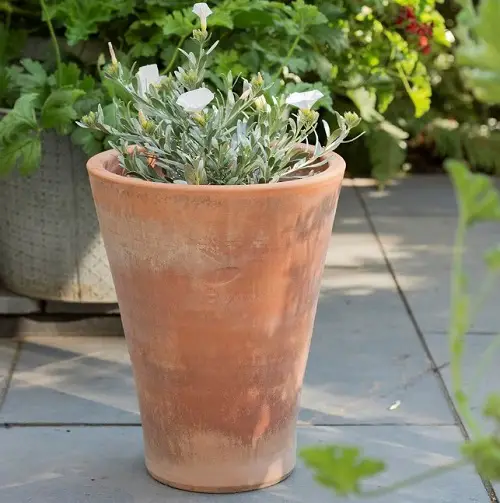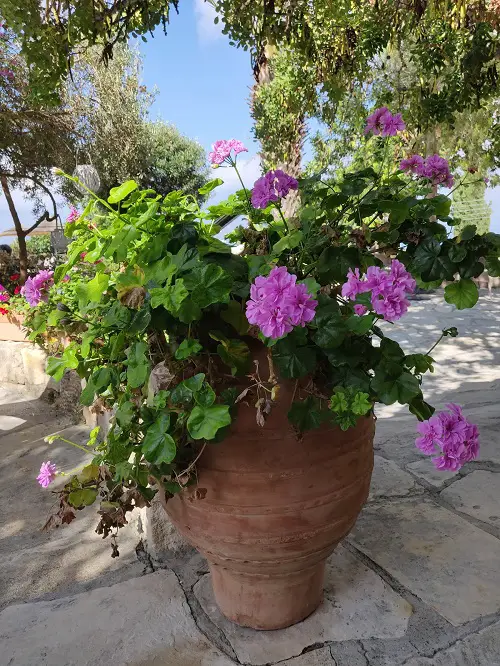Are you doing everything “right” but still seeing no flowers? Here’s the biggest reason why your container plants never bloom enough.

Why do some potted plants never bloom enough and eventually wither and die? There are many factors involved, which can lead to little or no blossoms in container plants but there is one small miscalculation that you do is the ultimate reason behind their failure.
What seems inconsequential is a crucial mistake costing you your precious flowers, fruits, and, ultimately, the plant. Here’s a hint—less is more, and more is less. Read on to find out!
Biggest Reason Why Your Container Plants Never Bloom
Oversized pots! That’s the answer you’ve been waiting for. If your pot is much bigger than what your plant requires, it will produce fewer flowers and will eventually die because of root rot.
It seems logical that an enormous container will give roots enough space to grow and spread, leading to a healthy, blossom-filled plant. Instead, it leads to none! Let’s explore this blunder and ways to tackle it. Meanwhile, don’t forget to check out our plant pot sizes guide to help you pick the right one!
Why No Blooms in Oversized Pots?

Ideally, a pot should be one or two sizes larger than the size of the plant’s rootball; this is what a plant typically needs. For example, a plant with a six-inch rootball needs to be repotted in an eight-inch or, at most, ten-inch-diameter container.
However, if we go four or more sizes bigger than the spread size of its rootball, which would be a fourteen-inch pot for a six-inch plant rootball, you’ve triggered not only the lack of flowering but the death of the plant as well! Here’s why.
Larger pots indicate more substrate, increasing the amount of water the plant retains. This leads to root rot, ultimately resulting in weak and dying plants. Also, this causes nutrients to be unevenly distributed, leading to fewer blooms.
Beneficial nutrients and fertilizers may not seep in and spread through the entire potting mix. With nutrients in random parts of the soil, the plant will find it difficult to access and absorb what it needs to grow and bloom.
Now, with so much space, the roots overwork to spread far and wide, and the plant will have little energy left to do anything else. So you’ll end up with an extensive root system but not a single bloom! This is especially true for plants with shallow roots that need to be grown in small pots.
Plants Flower More When Grown in Small Pots

Plants often bloom more often when they are slightly root-bound. Annuals, herbs, succulents, short-lived perennials, and houseplants perform better in tight containers.
Fruit trees, fast-growing shrubs, plants, perennials with tap roots, and those that won’t transplant well are exceptions and can be grown in 2 to 3 times bigger containers.
The top two reasons why planting in one or two sizes bigger planters works are:
- If grown in an overly large pot, the plant will start to focus its energy on root development at the expense of top growth of foliage, flowers, and fruits. This is why a slightly bigger pot works best.
- Root-bound plants tend to produce more ethylene, a hormone that aids in forming blossoms, leaf shedding, and fruit ripening, and this cannot occur in larger-than-required containers.
Sounds simple, but you’ll be surprised how common and lethal this mistake is for the flowers on your potted plant. Do try it out and let us know below via comments if it helped your blooms!


